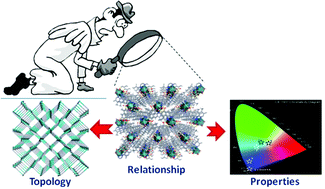Tuning the structure, dimensionality and luminescent properties of lanthanide metal–organic frameworks under ancillary ligand influence†
Abstract
This manuscript addresses the synthesis, structural characterization and optical properties of a 1D coordination polymer (CPs) and 2D and 3D Metal–Organic Frameworks (MOFs) obtained from lanthanide metals, 3-hydroxinaftalene-2,7-disulfonic acid (3-OHNDS) and two different phenanthroline derivates as ancillary ligands. The first is a family of 2D compounds with formula [Ln(3-OHNDS)(H2O)2], where Ln = La(1), Pr(2), Nd(3) and Sm(4). The addition of 1,10-phenanthroline (phen) in the reaction produces 1D compounds with general formula [Ln(3-OHNDS)(phen)(H2O)]·3H2O, where Ln = La(5), Pr(6), Nd(7) and Sm(8). Finally, the synthesis with 3,4,7,8-tetramethyl-1,10-phenanthroline (3,4,7,8-TMPhen) as an ancillary ligand results in the formation of the 3D [La(3-OHNDS)(3,4,7,8-TMphen)(H2O)] (9) compound. The photoluminescence (PL) properties of 1D and 2D compounds were fully investigated in comparison with the 3-OHNDS ligand. One of the most important results was the obtaining of a white-light single-emitter without adding dopant atoms in the structure. With all these results in mind it was possible to establish structure–property relationships.


 Please wait while we load your content...
Please wait while we load your content...